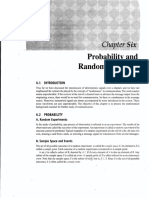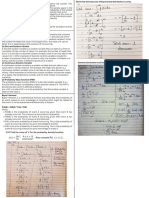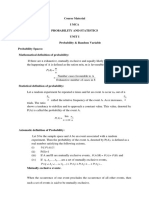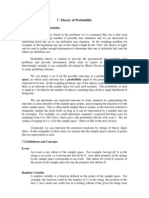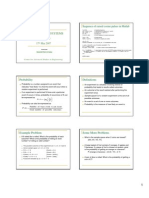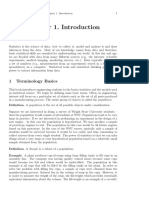0% found this document useful (0 votes)
14 views51 pagesPcs Module 1 Notes
The document discusses the concept of random variables and processes, emphasizing the unpredictability of random signals in communication systems due to interference and noise. It defines key terms in probability theory, including random experiments, sample spaces, and events, while outlining the axioms of probability measures and conditional probabilities. Additionally, it covers statistical averages of random variables, including expected value, variance, and correlation, and introduces the concept of moments and characteristic functions in probability distributions.
Uploaded by
srujanraj10Copyright
© © All Rights Reserved
We take content rights seriously. If you suspect this is your content, claim it here.
Available Formats
Download as PDF, TXT or read online on Scribd
0% found this document useful (0 votes)
14 views51 pagesPcs Module 1 Notes
The document discusses the concept of random variables and processes, emphasizing the unpredictability of random signals in communication systems due to interference and noise. It defines key terms in probability theory, including random experiments, sample spaces, and events, while outlining the axioms of probability measures and conditional probabilities. Additionally, it covers statistical averages of random variables, including expected value, variance, and correlation, and introduces the concept of moments and characteristic functions in probability distributions.
Uploaded by
srujanraj10Copyright
© © All Rights Reserved
We take content rights seriously. If you suspect this is your content, claim it here.
Available Formats
Download as PDF, TXT or read online on Scribd
/ 51















